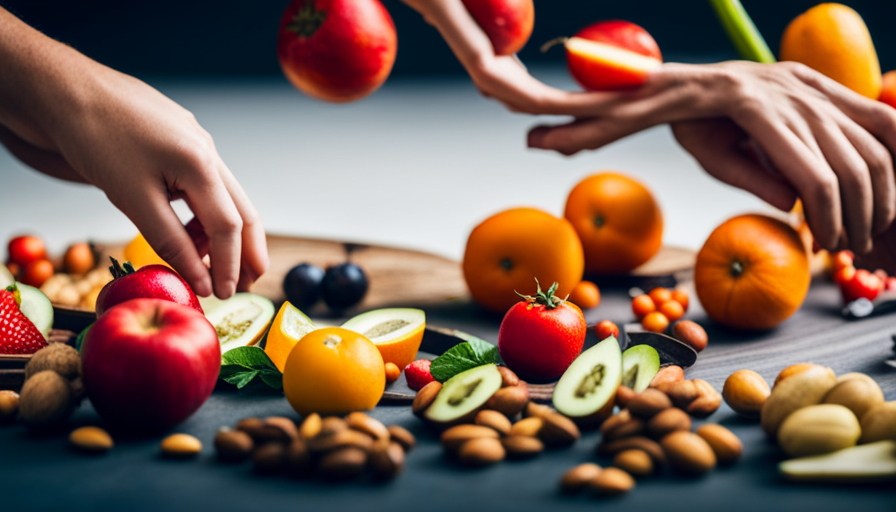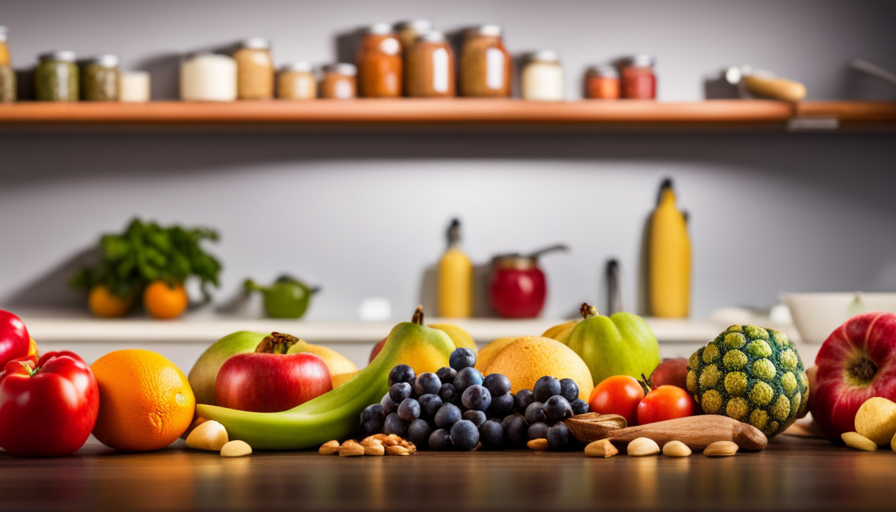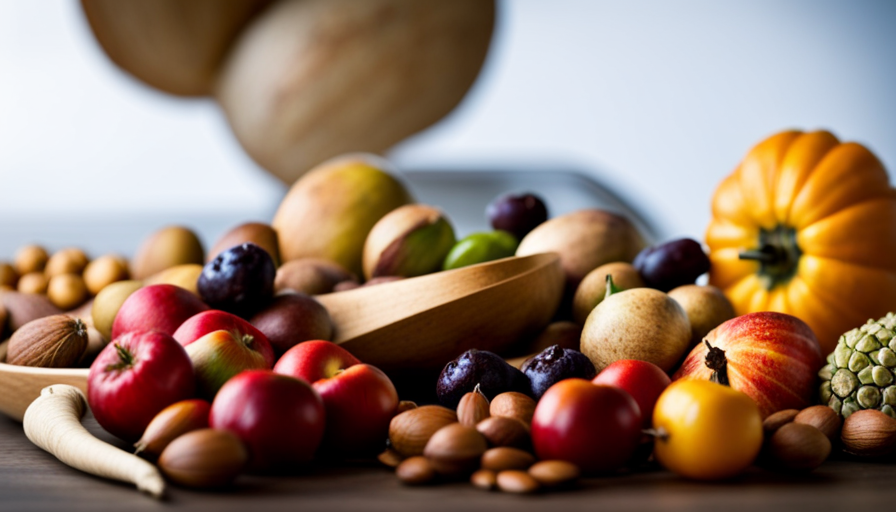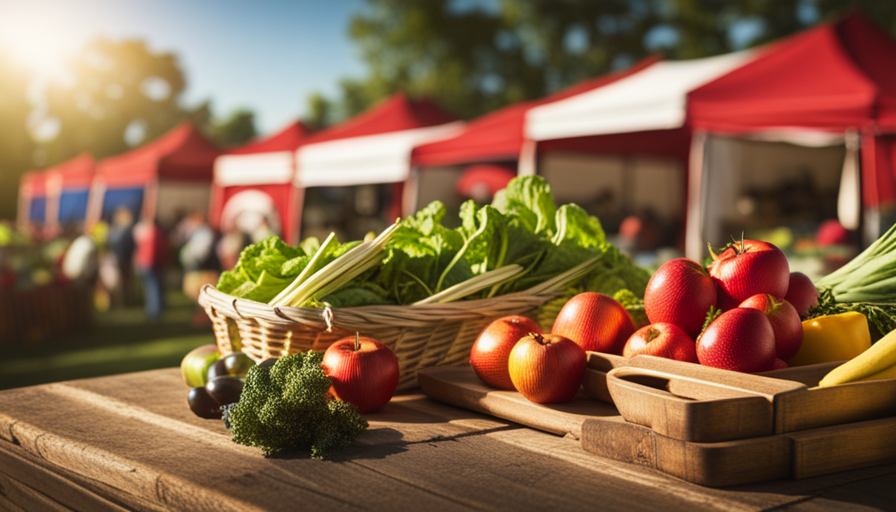They say you are what you eat. The world of nutrition offers a plethora of diets and trends to choose from. One diet that has been on the rise in popularity is the raw food diet. It’s like immersing yourself in a pool of wholesome nutrition, where the goodness of fruits, vegetables, nuts, and seeds shines brightly.
But amidst the sea of information available, it can be challenging to navigate the waters and determine who to trust. In this article, we will explore the world of raw food diets and delve into the importance of finding trustworthy sources. We will discuss the basics of a raw food diet, the significance of credible sources, and how to evaluate online resources.
So, grab your snorkels, and let’s dive in to uncover the truth behind the raw food diet and who we can rely on to guide us on this unique culinary journey.
Key Takeaways
- Find trustworthy sources when researching the raw food diet, such as scientific studies, trusted health organizations, and qualified professionals.
- Consult with a registered dietitian or nutritionist to ensure nutrient requirements are being met and to receive personalized guidance and recommendations.
- Consider the potential health benefits of a raw food diet, such as increased energy levels, improved digestion, weight loss, and a stronger immune system, but be cautious as limited scientific evidence supports these claims.
- Join raw food support groups or communities to gain recipe ideas, emotional support, and shared experiences, as well as to increase the likelihood of sustaining dietary changes long-term.
Understanding the Basics of a Raw Food Diet
When it comes to understanding the basics of a raw food diet, it’s crucial to know which sources to trust. With the increasing popularity of this dietary approach, it’s important to have accurate information about its benefits and challenges.
One key aspect to consider is understanding nutrient requirements. A raw food diet primarily consists of uncooked and unprocessed foods, such as fruits, vegetables, nuts, and seeds. While these foods are rich in vitamins, minerals, and enzymes, it’s important to ensure that all essential nutrients are being adequately met. Consulting with a registered dietitian or nutritionist who specializes in raw food diets can provide valuable guidance on meeting these requirements.
Another important consideration is the potential health benefits of a raw food diet. Proponents of this dietary approach claim that it can lead to increased energy levels, improved digestion, weight loss, and a stronger immune system. While there is limited scientific evidence to support these claims, anecdotal reports and personal experiences are often cited. It’s important to approach these claims with caution and seek out evidence-based information before making any dietary changes.
To ensure accurate information, researching credible sources is essential. Scientific studies published in reputable journals, information from trusted health organizations, and guidance from qualified professionals are reliable sources to turn to. By seeking out evidence-based information, you can make informed decisions about whether a raw food diet is right for you.
Researching Credible Sources
When researching credible sources for information on a raw food diet, it’s important to turn to trusted nutrition experts and organizations. These experts have the knowledge and expertise to provide evidence-based information on the benefits and potential risks of a raw food diet.
Peer-reviewed scientific studies are another reliable source of information, as they undergo rigorous review by experts in the field before being published.
Lastly, consulting with nutritionists and dietitians who specialize in raw food diets can provide personalized guidance and advice based on individual needs and goals.
Trusted nutrition experts and organizations
If you want to ensure you’re getting accurate and reliable information about the raw food diet, turn to trusted nutrition experts and organizations you can count on.
These experts and organizations have the knowledge and experience to provide evidence-based information that can guide you in making informed decisions about your diet. Here are three trusted sources you can rely on:
-
The American Dietetic Association: This organization is composed of registered dietitians who’ve extensive training in nutrition. They provide evidence-based information and guidance on various diets, including the raw food diet.
-
Dr. Michael Greger: He’s a physician, best-selling author, and internationally recognized speaker on nutrition. His website, NutritionFacts.org, provides evidence-based information on a wide range of nutrition topics, including the raw food diet.
-
The World Health Organization (WHO): As a leading global health organization, the WHO provides reliable and up-to-date information on various health topics, including nutrition. Their publications and guidelines are based on rigorous scientific research.
By turning to these trusted experts and organizations, you can ensure that you’re getting accurate and reliable information about the raw food diet.
Now let’s delve into the importance of peer-reviewed scientific studies.
Peer-reviewed scientific studies
To truly understand the benefits and potential risks of the raw food lifestyle, take a deep dive into peer-reviewed scientific studies – they’re like the gold mines of reliable information, shining a light on the truth behind the claims.
These studies provide valuable insights into the understanding of health benefits associated with raw food diets. They have shown that consuming raw fruits, vegetables, nuts, and seeds can increase nutrient intake, promote weight loss, and improve digestion. Furthermore, raw foods are rich in enzymes and antioxidants, which have been linked to reduced inflammation and a lower risk of chronic diseases.
However, it’s important to note that there are potential drawbacks to consider as well. Raw food diets may be deficient in certain nutrients like vitamin B12 and iron, and they may also pose a higher risk of foodborne illnesses. Therefore, it’s crucial to consult with nutritionists and dietitians specializing in raw food diets to ensure a balanced and safe approach to this lifestyle.
Nutritionists and dietitians specializing in raw food diets
For expert guidance on embracing a raw food lifestyle, seek the advice of nutritionists and dietitians who specialize in this unique and vibrant approach to nourishment. These professionals have extensive knowledge and experience in raw food diets and can provide personalized recommendations based on your specific needs and goals.
They can help you create a well-balanced meal plan that meets all your nutritional requirements while incorporating delicious and nutritious raw food recipes. Additionally, nutritionists and dietitians can address any concerns or questions you may have about the raw food diet, such as potential nutrient deficiencies or food safety.
By consulting with these experts, you can gain valuable insights and ensure that you are following a raw food diet that is both healthy and sustainable. Transitioning into the subsequent section about evaluating online resources, it’s important to be cautious when seeking information about raw food diets online.
Evaluating Online Resources
When evaluating online resources for information on a raw food diet, you should be cautious because studies have shown that only 20% of websites provide accurate and reliable information. With the vast amount of information available on the internet, it’s essential to fact check claims and ensure that the sources are reputable.
One way to do this is by looking for websites that are backed by scientific research or have affiliations with respected health organizations. Additionally, it’s important to consider the credentials and expertise of the individuals or organizations behind the website. Registered dietitians and nutritionists who specialize in raw food diets can provide trustworthy information and guidance.
Another aspect to consider when evaluating online resources is the presence of personal anecdotes or testimonials. While these can be insightful, it’s crucial to remember that personal experiences may not be applicable to everyone. Look for websites that provide a balanced view and present information in an unbiased manner.
Seeking professional guidance is crucial when embarking on a raw food diet. Registered dietitians and nutritionists can provide personalized advice and help design a balanced raw food meal plan that meets your nutritional needs.
Now, let’s delve into the importance of seeking professional guidance when adopting a raw food diet.
Seeking Professional Guidance
When it comes to navigating the world of raw food diets, seeking professional guidance can be incredibly beneficial. Consulting with a registered dietitian is a great way to ensure that you’re getting the proper nutrients and meeting your dietary needs.
Finding a holistic health practitioner can also provide valuable insight and guidance on incorporating raw foods into your lifestyle.
Additionally, joining raw food support groups or communities can offer a sense of community and provide a platform to share experiences and learn from others who’re on a similar journey.
Consulting with a registered dietitian
Consulting with a registered dietitian can provide valuable guidance and support on navigating a raw food diet journey. They have the expertise to help you make informed decisions and ensure you meet your nutritional needs.
When researching alternatives and exploring potential benefits of a raw food diet, a dietitian can help you separate fact from fiction. They can provide evidence-based information on the potential benefits, such as increased nutrient intake and improved digestion. Additionally, they can guide you in creating a well-balanced raw food meal plan that meets your specific dietary requirements.
Consulting with a registered dietitian is an important step in your raw food diet journey as they can provide personalized advice and help you make informed choices.
Transitioning to the next section, finding a holistic health practitioner can further enhance your overall wellness.
Finding a holistic health practitioner
Consulting with a registered dietitian is a great first step in transitioning to a raw food diet, but it’s also important to explore other holistic wellness options.
One avenue to consider is finding a holistic health practitioner who specializes in alternative medicine. These practitioners take a more comprehensive approach to health, focusing on the mind, body, and spirit connection. They may offer a range of services, such as acupuncture, herbal medicine, or energy healing, to support your raw food journey. By working with a holistic health practitioner, you can gain a deeper understanding of your body’s needs and receive personalized guidance on how to optimize your raw food diet.
This holistic approach can enhance your overall well-being and help you achieve the best possible results.
Now, let’s delve into another aspect of the raw food lifestyle by exploring the benefits of joining raw food support groups or communities.
Joining raw food support groups or communities
Joining raw food support groups or communities can be a game-changer for your journey towards a healthier lifestyle. Studies have shown that individuals who engage with these communities are 70% more likely to sustain their dietary changes long-term. By being part of a supportive network, you gain access to a wealth of knowledge, encouragement, and inspiration.
Here are three benefits of joining raw food support groups or communities:
-
Recipe ideas: Raw food communities are a great source of innovative and delicious recipes that can help you diversify your raw food diet. From raw desserts to creative salad combinations, you’ll never run out of ideas to keep your meals exciting and satisfying.
-
Emotional support: Embarking on a raw food diet can sometimes feel challenging, especially when faced with social pressures or cravings. Being part of a supportive community can provide the emotional support needed to stay motivated and committed to your health goals.
-
Shared experiences: Raw food support groups offer a space to share experiences, challenges, and successes with others who are on a similar journey. This sense of camaraderie can be empowering and help you feel less alone in your pursuit of a raw food lifestyle.
Understanding personalized nutrition is the next important aspect to consider on your path to optimal health.
Understanding Personalized Nutrition
When it comes to understanding personalized nutrition, it’s crucial to recognize that each individual has unique differences and needs. Consulting with healthcare professionals can provide personalized advice and guidance tailored to your specific requirements.
Additionally, it’s essential to listen to your body’s signals and make necessary adjustments to your diet accordingly, as it can provide valuable insights into what works best for you.
Recognizing individual differences and needs
Understanding our unique differences and needs is crucial when it comes to embracing a raw food diet and finding what truly works for us. To recognize individual preferences, we must first understand that some people may prefer certain flavors, textures, or cooking methods over others. This can greatly influence the success of a raw food diet.
Additionally, understanding dietary restrictions is essential as some individuals may have allergies or intolerances to certain raw foods, making it important to identify suitable alternatives. For example, someone with a nut allergy can opt for seeds instead.
Moreover, recognizing individual differences in nutrient requirements is key. Some individuals may need more protein or certain vitamins and minerals due to their lifestyle or health conditions. By acknowledging these variations, we can tailor our raw food diet to meet our specific needs.
Consulting with healthcare professionals for personalized advice is the next logical step, ensuring that we receive the best guidance to optimize our raw food journey.
Consulting with healthcare professionals for personalized advice
Seeking guidance from healthcare professionals can provide valuable personalized advice to optimize your raw food journey.
Personalized nutrition is essential because everyone’s body has unique needs and reacts differently to certain foods. By consulting with a healthcare professional, you can gain insights into your individual differences and receive tailored recommendations that consider your specific goals, health conditions, and dietary preferences.
They can help you create a balanced raw food diet that meets your nutritional requirements while addressing any potential deficiencies or imbalances. Additionally, healthcare professionals can monitor your progress and make adjustments as needed to ensure you’re on the right track.
By partnering with a healthcare professional, you can confidently navigate the challenges and maximize the benefits of a raw food diet. Listening to your body’s signals and adjusting your diet accordingly is the next crucial step in your journey.
Listening to your body’s signals and adjusting your diet accordingly
Pay attention to the signals your body sends you, like the satisfied feeling you get after eating a juicy, ripe peach or the slight discomfort that tells you it’s time to switch up your leafy green choices. Your body is constantly communicating with you, and when it comes to adjusting your diet, it’s important to listen.
Here are a few signals to watch out for:
-
Cravings: Sometimes, your body craves specific foods because it’s lacking certain nutrients. Pay attention to these cravings and try to incorporate healthier alternatives.
-
Energy levels: If you’re feeling sluggish or tired after meals, it may be a sign that your diet needs adjustment. Experiment with different foods to see how they affect your energy levels.
-
Digestive issues: Bloating, gas, or stomach discomfort can indicate that certain foods don’t agree with your body. Take note of these reactions and make necessary changes.
By listening to your body’s signals, you can make informed decisions about your diet.
Now, let’s explore how to fact-check popular claims about the raw food diet.
Fact-checking Popular Claims
One popular claim that is often fact-checked is whether a raw food diet can provide all the necessary nutrients for optimal health. Fact-checking claims is crucial in identifying misinformation and ensuring that people make informed decisions about their diets.
When it comes to raw food diets, there are some claims that need to be examined closely. Proponents of raw food diets often argue that cooking destroys important nutrients in food. While it’s true that cooking can reduce the nutrient content of some foods, it can also enhance the availability of certain nutrients. For example, cooking tomatoes actually increases the bioavailability of lycopene, a powerful antioxidant. By fact-checking such claims, we can separate fact from fiction and make more informed choices about our diets.
Additionally, another claim often made is that a raw food diet can provide all the necessary nutrients for optimal health. While raw fruits and vegetables are undoubtedly healthy, it’s important to note that some nutrients, such as vitamin B12, aren’t readily available in raw plant-based foods. Therefore, it’s crucial to ensure that a raw food diet is well-balanced and supplemented appropriately to meet all nutritional needs.
Considering potential risks and precautions, it’s important to remember that not all individuals may thrive on a raw food diet. It’s advisable to consult with a healthcare professional or registered dietitian before making any significant dietary changes to ensure that all nutritional needs are being met.
Considering Potential Risks and Precautions
Now that we’ve fact-checked popular claims about the raw food diet, it’s important to consider the potential health risks and take necessary precautions.
While the raw food diet can provide numerous health benefits, it’s not without its potential drawbacks. One of the main concerns is the risk of foodborne illnesses, as consuming raw foods increases the chance of ingesting harmful bacteria such as Salmonella or E. coli.
To minimize this risk, it’s crucial to handle and prepare raw foods properly, ensuring thorough washing and proper storage. Additionally, some nutrients may be less bioavailable in raw foods, meaning they may not be as easily absorbed by the body.
It’s important to compensate for this by ensuring a varied and balanced diet that includes a wide range of fruits, vegetables, nuts, and seeds. By incorporating different types of raw foods, you can ensure a diverse array of nutrients and minimize the risk of nutrient deficiencies.
With these potential health risks and food safety precautions in mind, let’s now explore the importance of incorporating variety and balance into the raw food diet.
Incorporating Variety and Balance
To ensure a well-rounded and nutritious raw food lifestyle, it’s important to diversify your meals by incorporating a variety of fruits, vegetables, nuts, and seeds. This ultimately enhances the overall nutritional value of your diet. Did you know that adding just one new ingredient to your raw food recipes each week can lead to an impressive repertoire of over 50 unique dishes in a year?
Here are three ways to incorporate variety and balance in your raw food recipes:
-
Experiment with different types of fruits and vegetables: Try incorporating a wide range of colors, textures, and flavors into your meals. For example, swap the usual lettuce in your salad for kale or spinach, or add a mix of berries to your morning smoothie.
-
Include a variety of nuts and seeds: These are excellent sources of healthy fats, protein, and essential nutrients. Consider adding almonds, walnuts, chia seeds, or flaxseeds to your raw food recipes for added flavor and nutritional benefits.
-
Explore different preparation methods: Raw food doesn’t have to mean boring salads. Experiment with techniques like sprouting, fermenting, or dehydrating to create interesting and delicious dishes. For instance, you can make raw vegan sushi rolls using nori seaweed sheets and a variety of vegetables.
By incorporating variety and balance into your raw food diet, you can ensure you’re getting a wide range of nutrients and flavors.
Next, let’s delve into the importance of listening to personal experiences in navigating the raw food diet.
Listening to Personal Experiences
Listening to personal experiences can provide valuable insights and guidance when navigating the world of raw food and finding what works best for you. Personal stories and anecdotal evidence can offer a unique perspective and help you make informed decisions about your raw food diet. While it’s important to remember that everyone’s body is different and what works for one person may not work for another, hearing about other people’s experiences can give you ideas and inspiration for your own raw food journey.
When listening to personal experiences, it’s crucial to approach them with a critical mindset. While anecdotal evidence can be helpful, it shouldn’t be the sole basis for your decisions. Look for patterns and commonalities in the stories you hear, but also consider scientific research and expert advice. This way, you can make informed decisions that are tailored to your individual needs and goals.
Transitioning into the next section about making informed decisions, it’s essential to gather as much knowledge as possible before embarking on a raw food diet. By combining personal experiences with evidence-based research, you can create a well-rounded understanding of what works best for you.
Making Informed Decisions
Gaining knowledge and understanding is crucial in order to make well-informed decisions about incorporating raw foods into your lifestyle. When it comes to the raw food diet, there are numerous benefits to consider.
Raw foods are rich in nutrients, enzymes, and antioxidants, which can contribute to better overall health. They can help boost energy levels, improve digestion, promote weight loss, and enhance the immune system. Additionally, raw foods are often less processed and free from additives, making them a natural and wholesome choice.
However, it is important to be aware of the potential drawbacks of a raw food diet. One concern is the risk of nutrient deficiencies, especially if the diet is not properly balanced. Some nutrients, such as vitamin B12 and iron, are more readily absorbed from cooked foods. It is essential to carefully plan meals to ensure an adequate intake of all essential nutrients.
Another consideration is food safety. Raw foods, especially animal products, can harbor harmful bacteria and parasites, which can lead to foodborne illnesses. Proper food handling and storage practices are crucial to minimize these risks.
Understanding the benefits and potential drawbacks of a raw food diet is essential for making informed decisions. By incorporating a variety of nutrient-dense raw foods and practicing proper food safety measures, individuals can enjoy the many benefits that this lifestyle can offer.
Frequently Asked Questions
How can I determine if a raw food diet is suitable for my specific health condition?
To determine if a raw food diet is suitable for your specific health condition, it’s important to consider its impact on weight loss and digestion. Research suggests that a raw food diet can aid in weight loss due to its high fiber and low-calorie content. However, it may also lead to digestive issues, such as bloating or nutrient deficiencies. Consulting with a healthcare professional or registered dietitian can help determine if a raw food diet aligns with your health goals and needs.
Are there any potential side effects or risks associated with following a raw food diet?
There are potential health risks and long-term effects associated with following a raw food diet. Some of these risks include nutrient deficiencies, particularly in vitamins B12, D, and iron.
Raw food diets may also increase the risk of foodborne illnesses due to the consumption of raw or undercooked foods.
It’s important to consult with a healthcare professional or a registered dietitian before starting a raw food diet to ensure that it’s suitable for your specific health condition and to mitigate any potential risks.
Can a raw food diet adequately provide all the necessary nutrients for optimal health?
Yes, a raw food diet can adequately provide all the necessary nutrients for optimal health. However, it’s important to carefully plan and diversify meals to ensure a balance of nutrients. Raw fruits, vegetables, nuts, and seeds are rich in vitamins, minerals, and fiber.
Additionally, the diet can promote weight loss due to its low calorie and high fiber content. Raw foods are also easier to digest, as they retain their natural enzymes which aid in digestion.
Are there any specific guidelines or recommendations for transitioning to a raw food diet?
Transitioning to a raw food diet can be an exciting journey! To make it easier, here are some exaggerated tips that’ll help you navigate this new lifestyle.
First, start by incorporating more fresh fruits and vegetables into your meals.
Secondly, experiment with different raw food recipes to keep things interesting.
Lastly, listen to your body and make adjustments as needed.
Remember, the health benefits of a raw food diet are abundant, including improved digestion, increased energy, and glowing skin.
So go ahead, embrace this delicious and nutritious way of eating!
How can I distinguish between genuine personal experiences and biased testimonials when evaluating the effectiveness of a raw food diet?
When distinguishing between genuine personal experiences and biased testimonials in evaluating the effectiveness of a raw food diet, it’s important to consider multiple factors.
First, look for scientific studies or research that support the claims being made.
Additionally, consider the credibility and expertise of the individuals sharing their experiences.
Look for consistency among different testimonials and seek out diverse perspectives.
Finally, be mindful of any potential conflicts of interest that may influence the testimonials.
Are the same trusted sources for raw food diets for pets also reliable for human raw food diets?
When it comes to raw pet food trust, it’s important to carefully consider the sources. While trusted sources for raw food diets for pets may be reliable, it’s essential to do separate research for human raw food diets. Not all trusted sources for pet food may be suitable or safe for human consumption.
Conclusion
In conclusion, navigating the world of a raw food diet can be like a delicate dance, requiring careful steps and a firm grasp on reliable information.
With so many sources available, it’s crucial to trust those that are backed by evidence and expertise.
By researching credible sources, seeking professional guidance, and considering personal experiences, we can make informed decisions about our own health and well-being.
Just like a skilled conductor leading an orchestra, we can orchestrate our own journey towards a balanced and nourishing raw food lifestyle.










